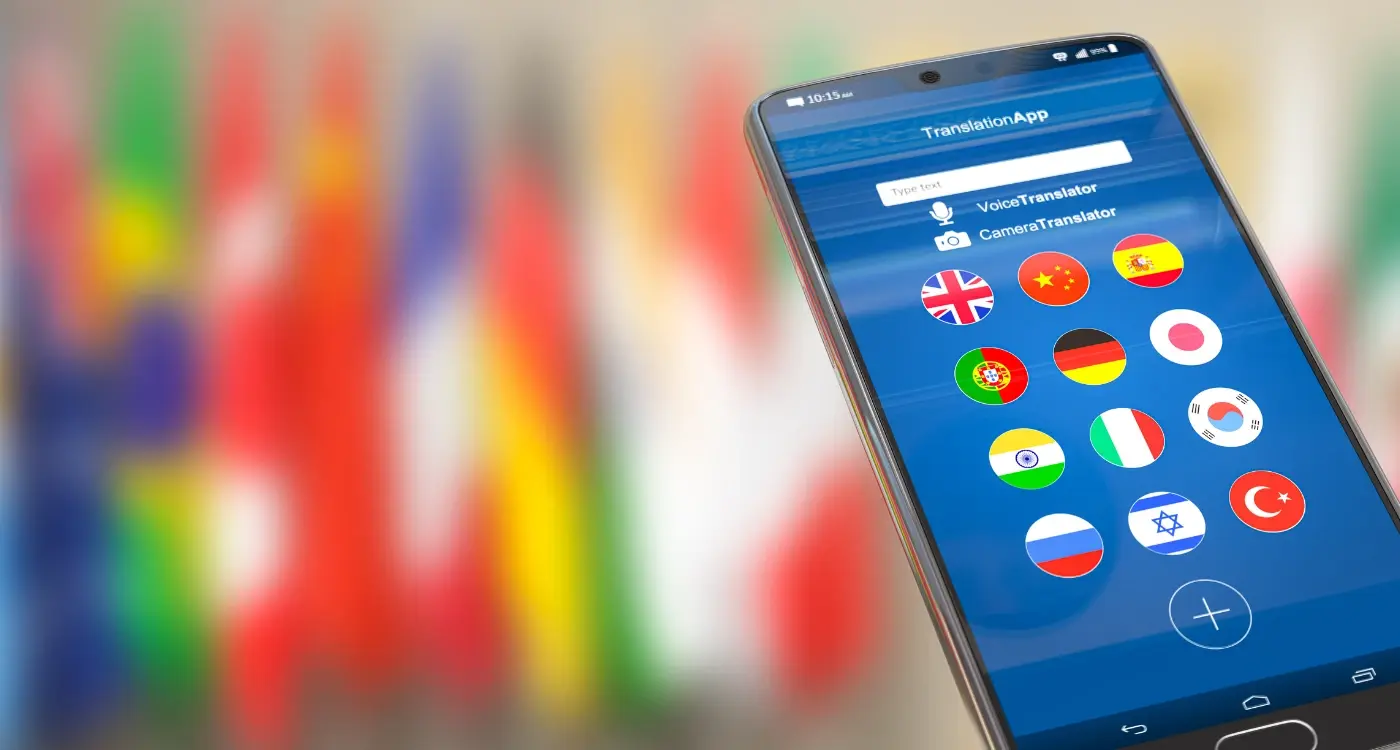How Much Can I Charge for My Mobile App?
So, you've got a brilliant idea for a mobile app or perhaps you're already knee-deep in the development phase. Kudos to you! Now comes the tricky part – figuring out how much to charge for your app. How do you even go about it? It involves understanding your audience, the market, and your business goals, but don't worry, we've got your back. By the end of this guide, you'll have a clearer idea of what your app is worth and how to communicate that value to your users effectively.
First things first, let's break down the basics of pricing a mobile app. You might be asking yourself, "Why does it matter so much?" Well, the price of your app could be the make-or-break factor for its success. Charge too much, and you might scare off potential users. Charge too little, and you might not cover your development costs or be perceived as low value. It's a balancing act, but if done right, it can be incredibly rewarding.
The value of an idea lies in the using of it.Thomas Edison
When you think about pricing, consider the different elements that contribute to your app's overall value. These can include:
- Development Costs: How much did it take to develop the app? This includes everything from coding to design.
- Maintenance and Updates: Apps need regular updates and maintenance to keep them running smoothly and securely.
- Customer Support: Providing excellent customer service can be a significant selling point and adds value to your app.
- Competitive Analysis: What are similar apps charging? This can give you a ballpark figure to start with.
- Unique Features: Does your app have unique features that others don't? These can justify a higher price point.
Each of these components not only impacts your costs but also your pricing strategy. So as we go through the different aspects of pricing your app, keep these factors in mind as we'll delve deeper into them in the later sections. Our aim here is to equip you with the knowledge to make an informed decision that aligns with your business goals and keeps your customers happy (and paying!).
Free, Freemium, Or Paid?
One of the most common areas many people struggle with when building a mobile app is pricing. Should my app be free? Should I charge a one-time fee? What about a subscription? It's a complex topic, but we're here to point you in the right direction.
Free Model
The free model is exactly what it sounds like—your app costs users absolutely nothing to download and use. The big question is, why would anyone give away their hard work for free? Well, a free model can be a brilliant strategy to build a massive user base quickly. It’s especially useful if you’re in a crowded market or need to collect a large amount of user data early on.
That said, maintaining a free app without any revenue stream can feel like trying to paddle upstream with a teaspoon. To turn a profit, you’ll likely need to incorporate adverts or in-app purchases. Sure, nobody loves ads, but subtle and well-placed ones can be a goldmine, and they give your users a chance to enjoy the app without spending a penny.
Freemium Model
The freemium model offers basic features for free while enticing users with premium features or extra content for a fee. Think of apps like Spotify or LinkedIn—free to get started, but if you want to unlock the full experience, you’ll need to pay up.
This model can be a win-win as users get to try out the app without any financial commitment, and if they find it useful, they’re more likely to invest in additional features. But beware, balancing what’s free and what’s paid can be tricky. You don't want to give away too much, but you need to offer enough to get people hooked. Finding that sweet spot is key and the timing of when to ask for payment is crucial.
Paid Model
With this model, users pay upfront to download your app. It’s straightforward, but can be a harder sell. People can be hesitant to pay for something they haven’t tried and have yet to see the value in. Your app needs to stand out and clearly present its value to convince users to hand over cash for it.
The good news is that you can generate revenue immediately, plus, having an up-front cost can position your app as a premium product. Think of top-tier apps like "Facetune" or "Monopoly." Users are more inclined to trust and value apps they’ve paid for. The challenge lies in convincing them it’s worth the cost before they’ve had a chance to experience it.
Every monetisation model has its own quirks and benefits. What works for one app might be a total flop for another. It’s all about understanding your audience, your market, and how you envision your app's journey to success. And remember, you can always mix and match monetisation models to suit your needs.
Average Pricing of Apps by App Store Category
When trying to figure out how much to charge for your app, it helps to know what the going rates are in different categories. Each app store category has its own average pricing, primarily based on the type of app and its functionality. Let's break down some of these so you can get a clearer picture:
Games: A highly competitive and saturated category, where most games are either free-to-play with in-app purchases (think Fortnite and Candy Crush) or cost between £0.99 and £9.99.
Productivity: People are willing to pay for tools that make their lives easier. Apps in this category usually range from £0.99 to £19.99, with some leveraging subscription models for premium features.
Health & Fitness: This is another category ripe for subscription models. Free versions often come with basic features, but a monthly or yearly subscription of £4.99 to £29.99 can unlock advanced insights and coaching.
Education: With the rise of e-learning, education apps often blend free content with paid courses or certifications. Individual courses can range from £9.99 to over £200, depending on the depth and quality of the material.
Business: Here, apps can run the gamut from simple tools to full-on enterprise solutions. Pricing can range from £2.99 for straightforward utilities to £99.99 or more for comprehensive packages with advanced features.
Of course, these are just general guidelines. The actual value of your app might fall outside these averages depending on the unique value it brings to its users.
By understanding the typical pricing patterns in your category, you'll be better positioned to set a price that resonates with your potential customers. It’s a fine balance—too low, and you could undervalue your app; too high, and you risk alienating users.
Making Sense Of App Store Fees And Commissions
Alright, let's talk about app store fees and commissions. If you're thinking about putting your app on major platforms like Apple's App Store or Google Play, you need to know they're not exactly running a charity. They take a slice of your earnings—usually 15% to 30%—once you start bringing in the cash.
What does this mean for you? Well, first off, you should factor these fees into your pricing strategy from the start. Ignoring them could lead to some nasty surprises later when you realise a chunk of your revenue is missing.
For instance, let's say you've decided to charge £3 for your app. If the store takes a 30% commission, you'd actually net around £2.10 per sale. Sounds simple, right? But these small details can add up quickly, especially if you're projecting a large volume of sales.
Price is what you pay. Value is what you get.Warren Buffett
Not to mention, some stores offer tiered commission structures. Google Play, for example, has a programme where your commission rate drops to 15% after your app hits $1 million in sales. So, if you're anticipating high volumes, these fee reductions can make a significant impact on your bottom line.
Also, don't forget about subscription-based models. Both Google Play and the App Store have different fee structures if your app uses a subscription model. Apple, for instance, reduces their cut from 30% to 15% if a user maintains their subscription for more than a year. Handy to know, right?
Tackling these fees and commissions might seem like navigating a minefield, but with a bit of planning, you can make sure they don't blow up your budget. That's where a solid pricing strategy comes into play—helping you stay profitable while keeping your app attractive to users.
How Market Research Can Influence Your App Pricing
It's no secret: pricing your app can feel like walking a tightrope, especially when you're trying to hit that sweet spot where users feel they're getting value for their money, and you're seeing healthy returns. So, how do you balance these scales? Enter market research.
Know the Market
You wouldn't launch a product without knowing your audience, so why price an app blindly? By diving into the market, you learn about your competitors, current trends, and what users are already paying—and for what value. Browse app stores, check out existing apps in your category, and take note of their pricing models. Are they free with in-app purchases, subscription-based, or one-time fee apps? Understanding the landscape lets you set a realistic and competitive price point that will be familiar to users.
Understanding Customer Behaviour
Users are at the heart of your app's success. Conducting surveys, focus groups or beta testing can shed light on what potential customers are willing to pay. This isn't just about slapping a price tag on your app, but thoughtfully considering the value users see in it. Is your app solving a common problem more effectively than others? Are users excited by its unique features? Let their feedback guide your pricing decisions.
Analyse Customer Feedback
After launch, feedback becomes your best friend. Comments and reviews on app stores and social media are goldmines for understanding user satisfaction with your app's pricing. If users complain about the cost, it might indicate a need to adjust prices or offer more value. On the flip side, positive sentiment can validate your decision and provide peace of mind that you're on the right track.
Test and Adjust Pricing
Just as Rome wasn't built in a day, neither is the perfect app pricing. A/B testing different price points and models can help you find what resonates best with your users. Start by offering your app at different price points to see which generates not only the most revenue but also the best user experience and retention. Analytics tools will be vital here, showing you which pricing model drives the most engagement and customer satisfaction.
Staying Up-to-Date with Market Trends
The mobile app market is ever-changing so keeping an ear to the ground for new trends and shifts in user preferences can keep your pricing strategy fresh and effective. Subscribe to industry reports, follow tech blogs, and participate in forums relevant to your niche. Staying informed allows you to anticipate changes and adapt accordingly, ensuring your app remains competitive and appealing.
In short, market research isn't a one-time task but an ongoing process. It’s a dance between listening and responding, ensuring you’re always in sync with your market and users. By rooting your pricing strategy in thorough research, you’ll be better positioned to make informed decisions that satisfy both your business goals and your users' wallets.
How To Communicate Your App's Value To Potential Users
Your app might be the next big thing since sliced bread, but it won't matter if your users can't see its value. Let's break down how to communicate that value effectively.
Understand Your Unique Selling Proposition (USP)
First off, what makes your app special? This isn’t just about features; it's about benefits. Perhaps your app saves time, simplifies a complex task, or offers a unique experience. Identify your unique selling proposition and make it the cornerstone of your messaging.
Use Clear and Simple Messaging
Steer clear of jargon and technical terms. Your potential users should understand in seconds what your app does and why they need it. Think of it like explaining it to a 12-year-old. For example, instead of saying "Our app leverages cutting-edge artificial intelligence algorithms," you could say "Our app helps you get things done faster."
Highlight User Testimonials and Reviews
People are more likely to trust your app if they see that others have had a positive experience. Share user testimonials, reviews, and case studies on your website and within the app stores. Social proof is powerful.
Showcase the Benefits Through Visuals
Images and videos speak louder than words. Create demo videos, tutorials, and screenshots that clearly illustrate your app’s benefits. A quick demo showing how your app makes life easier is much more convincing than a block of text.
Leverage Social Media
Don’t underestimate the power of social media. Use platforms like Instagram, LinkedIn, and Twitter to share updates, tips, and user experiences. Engaging with your audience on social media can generate buzz and build a community around your app.
Offer a Free Trial or Freemium Version
Let your app speak for itself by offering a free trial or a freemium version. This gives users a risk-free way to experience the value your app provides. If they love it, they’re more likely to convert to paying customers.
Be Transparent About Pricing
Clearly communicate your pricing model. Be upfront about any costs and what users get in return. Transparency builds trust, and trust leads to loyal customers.
Common Mistakes To Avoid When Pricing Your App
Pricing your app is as much an art as it is a science. There are some pitfalls that many businesses fall into, and knowing these can save you both time and potential revenue loss. Let's look at a few common mistakes and how you can steer clear of them.
Ignoring the Competition: It's easy to get so wrapped up in your app's awesomeness that you forget to check out what the competition is doing. A quick survey of similar apps can offer valuable insights into the market rate. Pricing too high might scare users away; pricing too low can give the impression of a low-quality product. Striking the right balance is crucial.
Overlooking Your Target Audience: Not all users are created equal, and neither are their wallets. Understand who your target audience is and what they're willing to pay. For instance, a productivity app targeted at business professionals can be priced higher than a casual gaming app for teens. Always align your pricing strategy with your audience’s expectations and financial comfort zone.
Ignoring Costs and Maintenance: Your app won't sustain itself, and neither should your pricing strategy. Development and ongoing maintenance costs should factor into your pricing. Many businesses forget this, only to realise that their revenue isn't covering the costs when bugs need fixing or features need updating. Plan for these expenses from the start.
Failing to Offer Different Pricing Tiers: Different users have different needs. Offering a single pricing tier might miss out on potential revenue from users willing to pay more for additional features. Likewise, some users might only need basic functionalities and may feel the full price isn't worth it. Having multiple tiers or a freemium model can cater to a broader audience and maximise your revenue.
Not Testing Your Pricing Strategy: You've done your homework and set a price, but don't just leave it at that. Testing your pricing strategy with a small user base or running A/B tests can provide valuable feedback. This can help you fine-tune your pricing before a full-scale launch. Consider seasonal promotions or limited-time offers to understand what works best.
Skipping Market Research: Knowledge is power, and market research is your best friend when it comes to pricing. Diving into market trends, customer behaviours, and economic conditions can provide a data-backed foundation for your pricing decisions. This way, you’re not just guessing but making informed choices.
Avoiding these common pitfalls can set you on the right path, but remember, flexibility is key. The market is always changing, and your pricing strategy should be adaptable, after all, even the best-planned strategy needs occasional tweaking!
Conclusion
There are so many variables involved in the complexities of app pricing, from understanding your target market to evaluating app store fees, and let’s not even talk about the competition! But fear not, because if you’ve tuned into this guide, you're already on the right track.
Here’s what you should take away from this: no single formula fits all when it comes to app pricing. It’s a dynamic process that involves trial, error, and sometimes a dash of intuition. You’ll need to conduct comprehensive market research, decide on a viable monetisation model, and communicate your app’s value convincingly to potential users. And always remember, one of the golden rules is transparencyl; people appreciate knowing what they are paying for and why.
While there’s no crystal ball to predict your app’s success, taking a structured and insightful approach will certainly tilt the odds in your favour. So go on, set your price, share your brilliance with the world, and make that app of yours the next big thing!
And hey, if you ever need a hand or a bit of expert advice, you know where to find us.
Happy pricing!
Share this
Subscribe To Our Learning Centre
You May Also Like
These Related Guides

How Can You Monitor Rivals Without Breaking the Bank?

Should I Translate My App Into Other Languages From Day One?



